
KUALA LUMPUR, March 25 — I’m not a big steak person. Or rather I am - I love eating steak but enjoying a properly cooked cut of prime beef when dining out can be an expensive affair.
It’s hardly something most of us can indulge in on a regular basis.
So it’s quite a rare pleasure when someone offers to not only make steak for you but to come over to your home and cook it there.
Not unlike a private chef, albeit one you train at the gym with and who hunts down new chicken rice shops for you. (Thank heavens for best buddies!).
One problem, however.
With the cooker hood in my tiny kitchen out of commission, the thought of someone searing raw meat and then basting it with sizzling butter and rendered fat is hardly compelling. Last thing I want to do is have the smoke alarms blaring at me.
No fear.
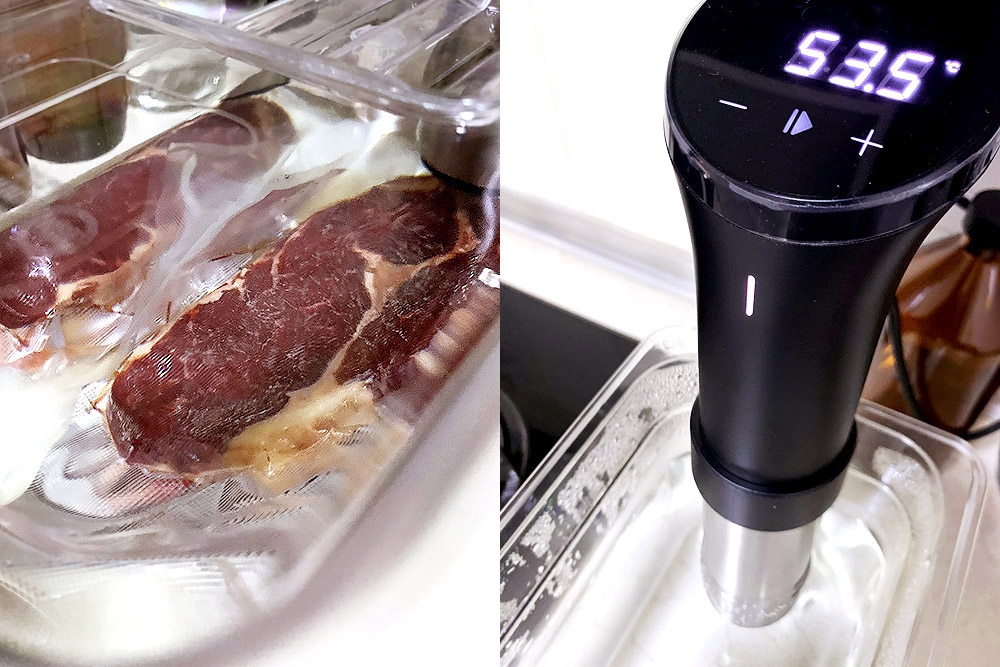
My friend (who is the closest to a Carnivore Diet advocate that I know of; he probably rues how I’d drag him to carbohydrate-rich haunts) had invested in a sous vide machine recently and swears by it. No clouds of greasy fumes, he assures me.
This is where the private chef portion comes in: he hauls his sous vide paraphernalia (just a plastic container and a cylindrical device that wouldn’t look out of place in a fight scene from Everything Everywhere All At Once) to my place, meaning this is one bout of Weekend Kitchen where I can take a break from any actual cooking.
The plastic container, looking like a vat for laboratory experiments, is known as the water bath. The phallic device is an immersion circulator — which is what heats up and controls the temperature of the water.
Now, sous vide isn’t a new concept to me: in many commercial kitchens, it is what chefs use to ensure steaks at busy restaurants go out to the tables in rapid order, yet are perfectly cooked. By setting the water bath to a specific, controlled temperature, the entire piece of meat is cooked through to a desired doneness.
Wouldn’t the meat get water-logged though? This is where a vacuum sealer comes in. My buddy had already dry brined the steaks - grass fed Australian Angus beef - overnight at home, then vacuum sealed them in food storage bags before bringing them over to my place.
(Again: private chef — now that’s the true indulgence, more than the steaks!)
He sets the water bath on my kitchen counter, turns on the immersion circulator, sets the temperature and dunks the sealed steaks into the water. Then we go to the gym.
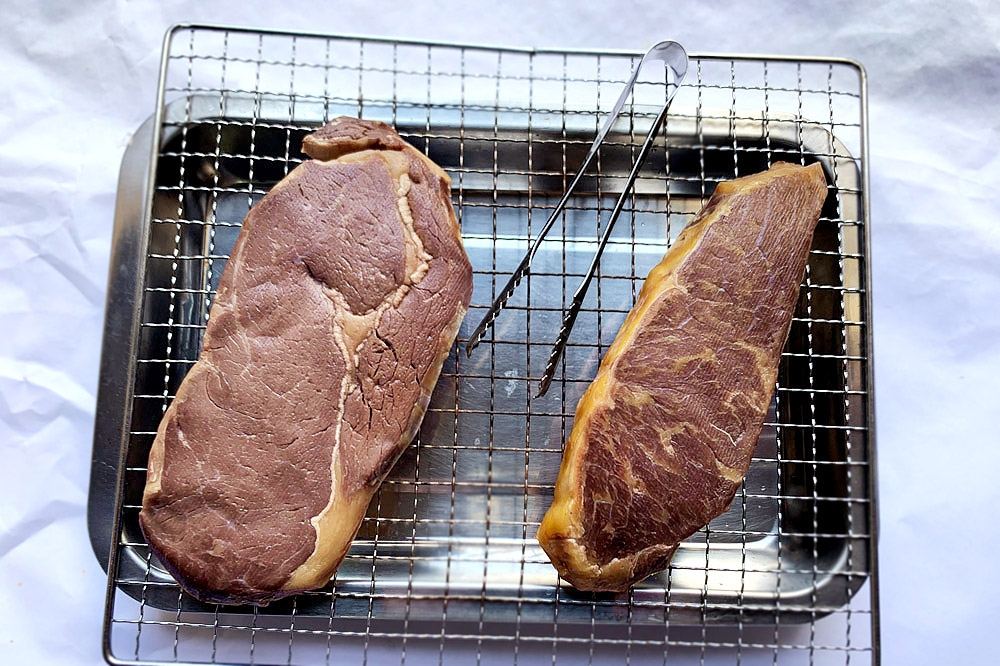
A couple of hours later, he removes the bags from the water and cuts them open. Pats the steaks dry with some paper towels... and they look sort of grey.
Not particularly appetising, though they are cooked to medium rare inside.
This is where the last step comes in: he brings out his secret tool — a culinary butane torch! — and sears the steaks briskly. We do this in the balcony so any spatter of grease is minimal and there’s nary a wisp of smoke.
The result? Better than many steaks I have had at fancy restaurants, if I’m honest. Tender, moist with a tasty crust thanks to the browning and Maillard reaction.
One could get used to this.
Maybe I am a big steak person after all.
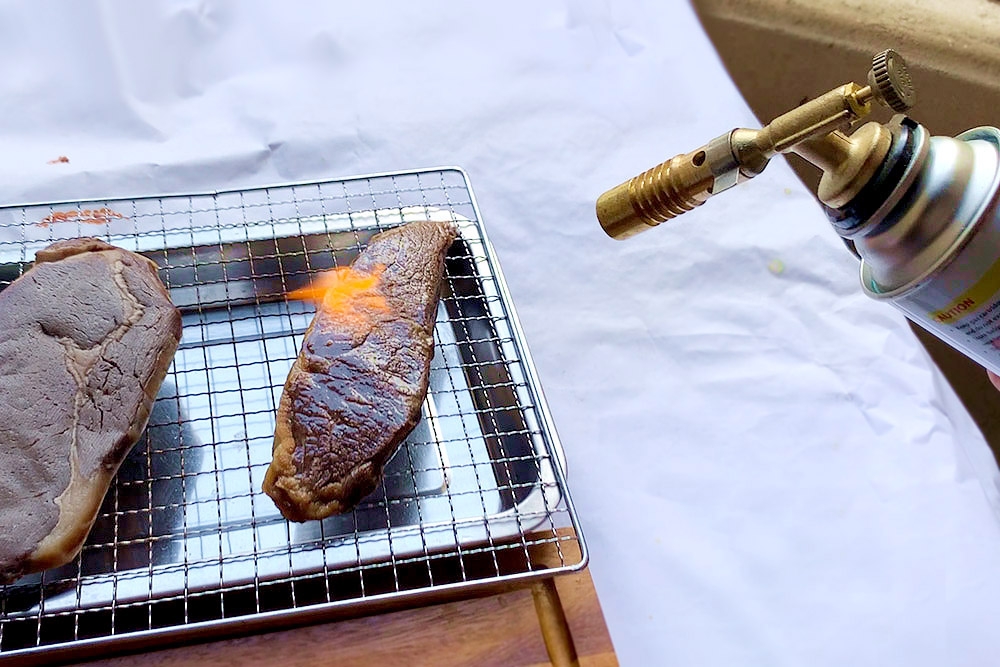
SOUS VIDE STEAK
Most sous vide machines recommend setting the temperature to about 130°F (54.4°C) but you might want to play with this and adjust accordingly to get your preferred doneness.
If medium rare isn’t your thing, perhaps you might want to go higher for medium or medium well. Or heavens forbid, well done.
(But why would you, really? Don’t waste your steaks.)
Here, my friend had used a ribeye and sirloin but really any cut of steak would benefit from the sous vide treatment. New York strip, T-bone, porterhouse or even skirt steak — it’s all good.
Sous vide your steaks for at least two hours to achieve the desired tenderness. You can cook it for even longer, up to four hours.
Beyond that, the tendons in the steak will start to break down and you won’t have the pleasurable chew anymore.
This will be more like pulled beef the longer you go, not unlike braising. Longer sous vide times are then for tougher cuts of beef, and not pricier steaks.
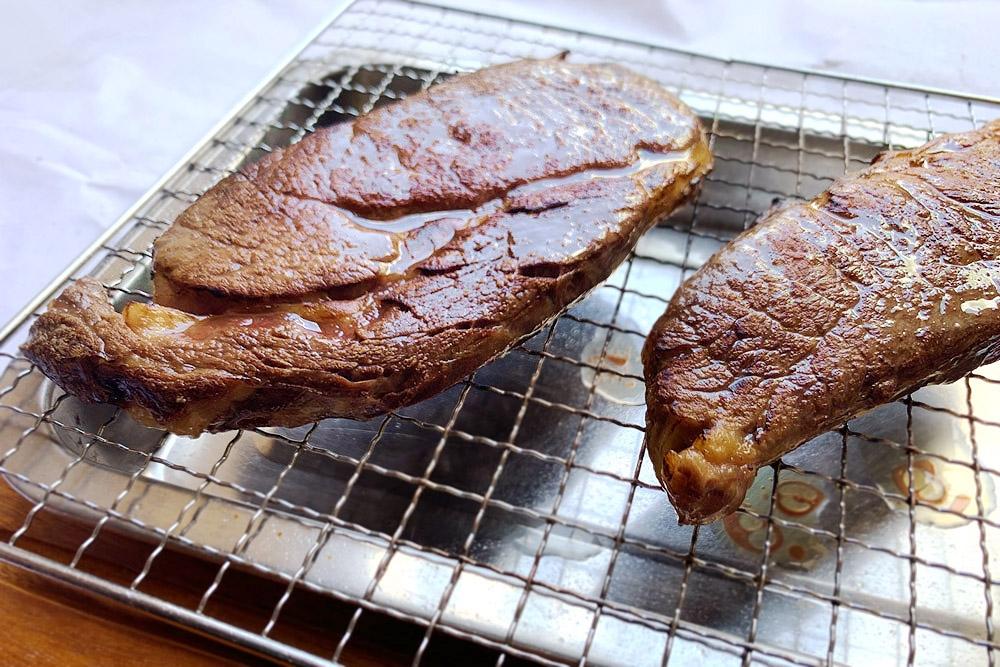
Ingredients and equipment
2 pieces of steak (your desired cuts)
1 teaspoon coarse sea salt
½ teaspoon freshly ground black pepper
Sous vide machine
Vacuum sealer and food storage bags
Culinary butane torch
Method
To dry brine your steaks, first mix the coarse sea salt and ground black pepper. Scatter this salt-pepper mix onto the steaks from above to ensure even distribution. Flip and repeat for the other side until the surface of your steaks are well coated.
Place the steaks on an elevated wire rack with a baking tray beneath to allow for air circulation. Place in the fridge for at least one hour, preferably overnight.
When ready to sous vide, remove the steaks from the fridge. Use paper towels to remove any excess grains of salt and pepper.
Fill the sous vide water bath with water, making sure it reaches the water line mark on your container. Next place the immersion circulator into the water bath. Set it to a temperature between 53.5°C-54.5°C (adjust accordingly to your preferred doneness).
Put each steak separately into individual food storage bags. Use a vacuum sealer to remove the air from the bags.
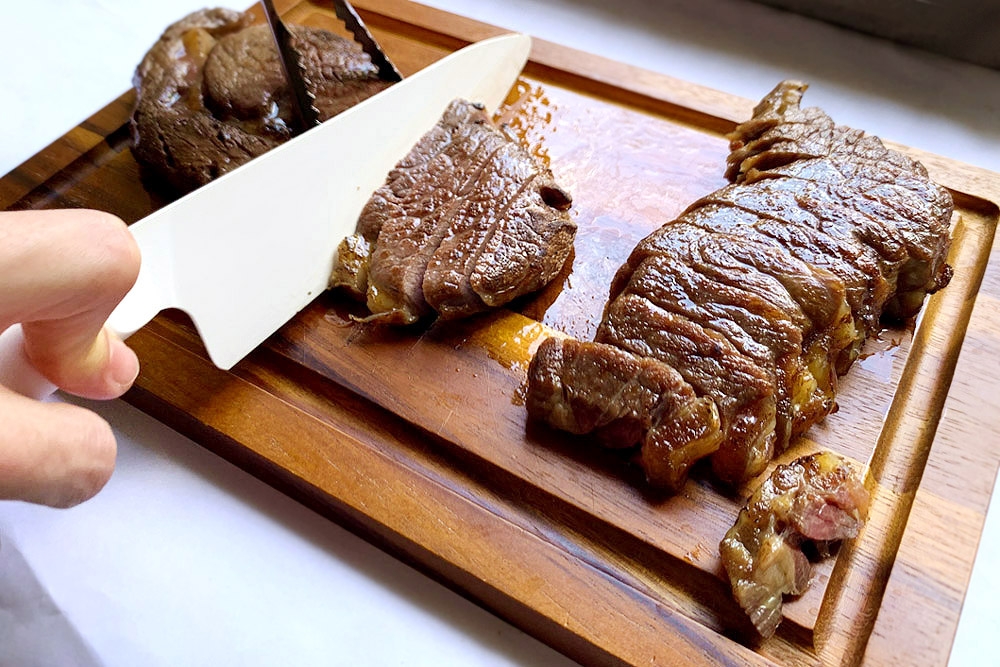
Place these vacuum-sealed steaks into the water bath that you had preheated. Cook at your set temperature for two to four hours.
After two to four hours, remove the bags from the water bath. Remove the steaks from the bags and pat the steaks dry thoroughly using paper towels.
Place the steaks on a clean wire rack above a baking tray to catch any drippings. Using a culinary butane torch, sear the surface of the steaks. Make sure to sear evenly and flip when done to sear the other side too.
Rest the steaks for a few minutes and then slice them with a sharp knife. Serve immediately.
For more Weekend Kitchen and other slice-of-life stories, visit lifeforbeginners.com.
* Follow us on Instagram @eatdrinkmm for more food gems.






















